Trackside in Norway / Sweden with Deane Motis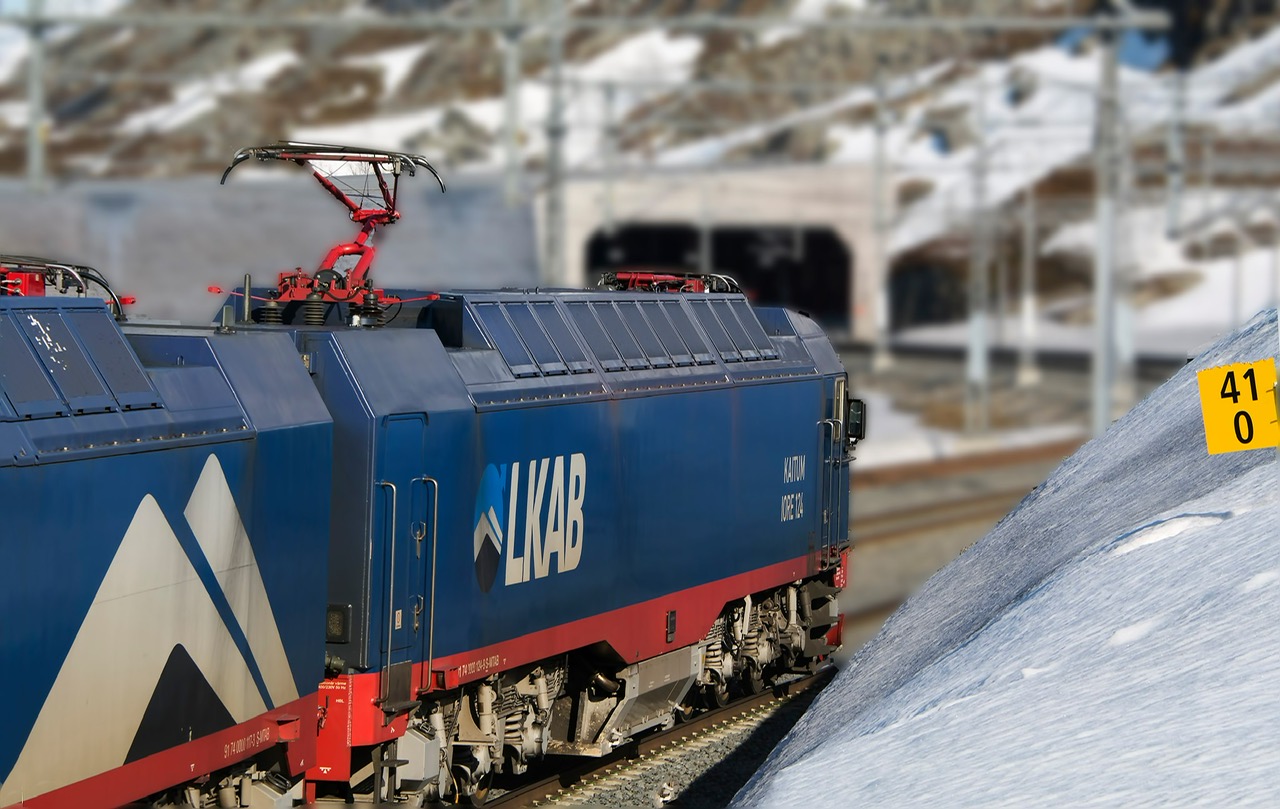 |
|
|---|---|
|
One of the world's foremost electric mining railroads is located 125 miles north of the
Arctic Circle. Operated by LKAB (Luossavaara-Kiirunavaara AB), its road fleet of 34 7200-hp
ADtranz/Bombardier-built locomotives are possibly the most powerful in existence. The 330-mile
rail line connects the underground mine in Kiruna, Sweden (largest anywhere) with the port of
Narvik, Norway (ice-free) and Lulea, Sweden. Deane Motis who has visited the region eight
times on business points out, "The rail line is owned and maintained by the respective countries,
and it is electrified at 15kV, 16.7 AC. Beyond the 11 to 14 daily LKAB iron ore consists, the
line also hosts Green Cargo (a regular freight operation), Kaunis Iron (another ore shipping
company shipping) and SJ, the Swedish passenger network that connects Stockholm with Oslo
the capitol city of Norway."
Deane also adds. "The day I rode, we had a trainee who operated the train round trip; Narvik to Kiruna. The trainer is a line engineer who is certified to train in both Norway and Sweden. Operating rules differ between the two countries. Some signal aspects have opposite meanings depending on the country. Dispatch is carried out between each respective country, however the dispatchers coordinate the train movements so as far as the train is concerned, the run is seamless. LKAB yard power in Narvik is handled by EMD powered T44s and in Kiruna by Cummins powered one-of-a-kind EMDs.
All images presented here are from the camera of Deane Motis. |
|
Supplemental Photos |
|
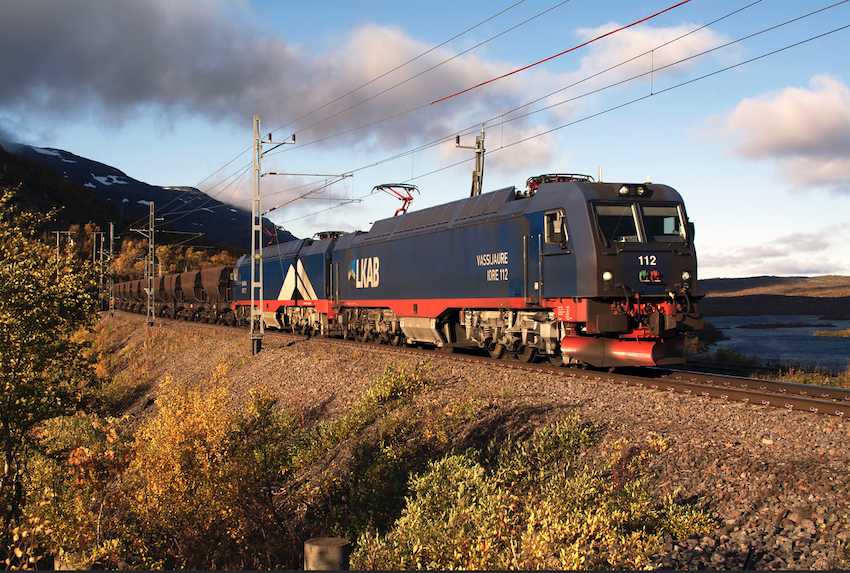 A LKAB #112-led train parallels a lake at Torneham, Sweden 18 September 2017 |
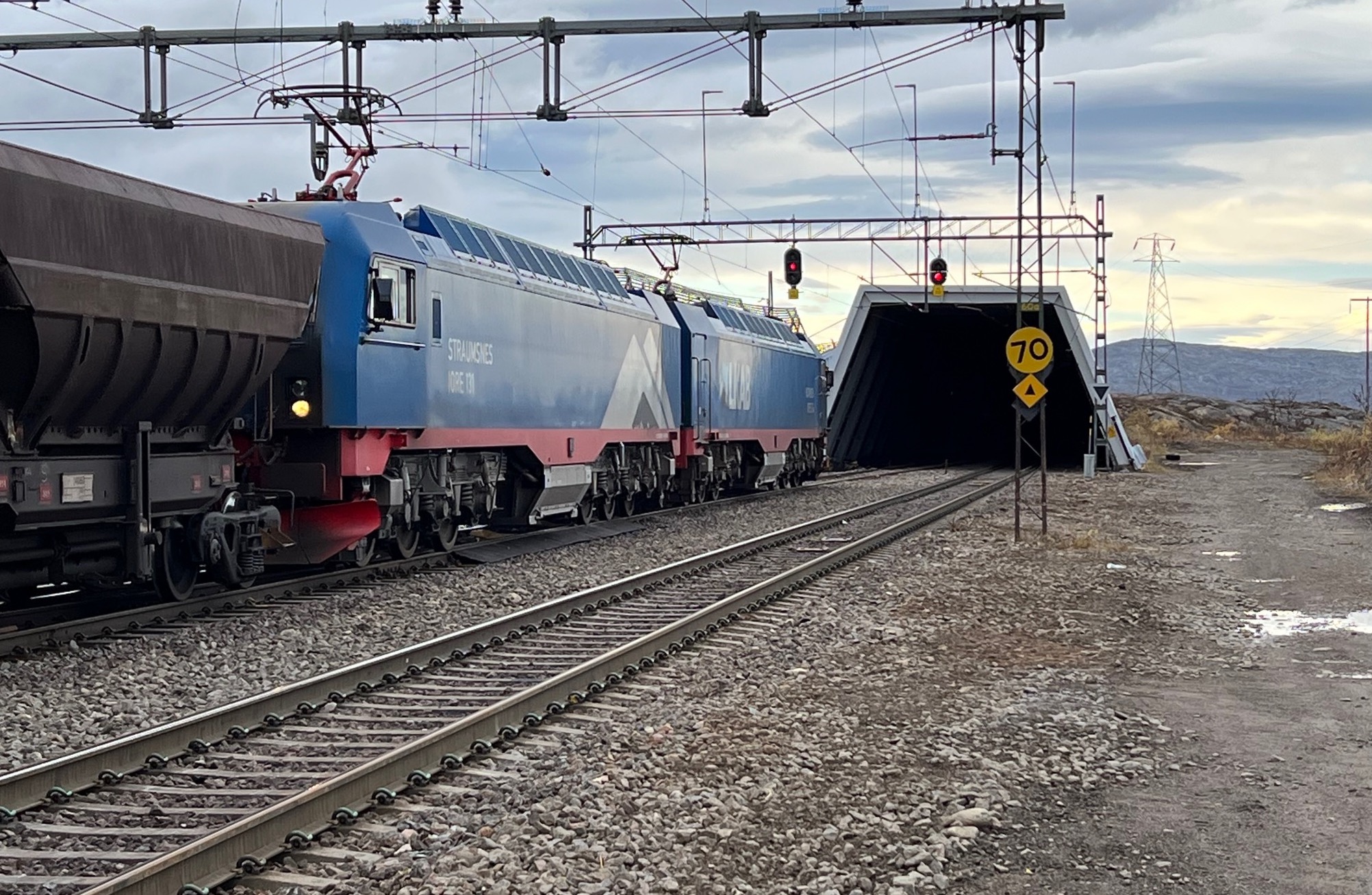 LKAB #134 approaches a snow shed; the line has multiple tunnels and snow sheds. (date) |
|---|---|
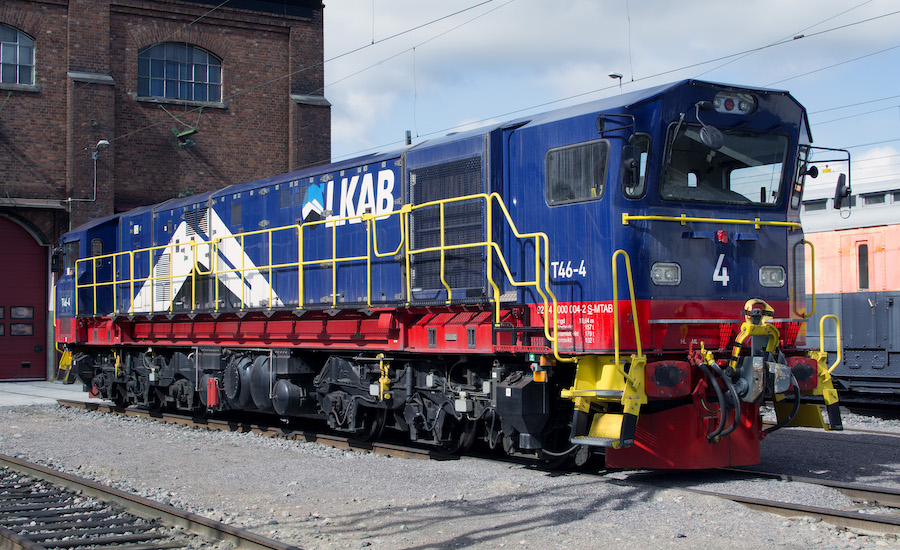 T46-4 diesel, used for switching/shunting, was repowered with a Cummins. 25 May 2016 |
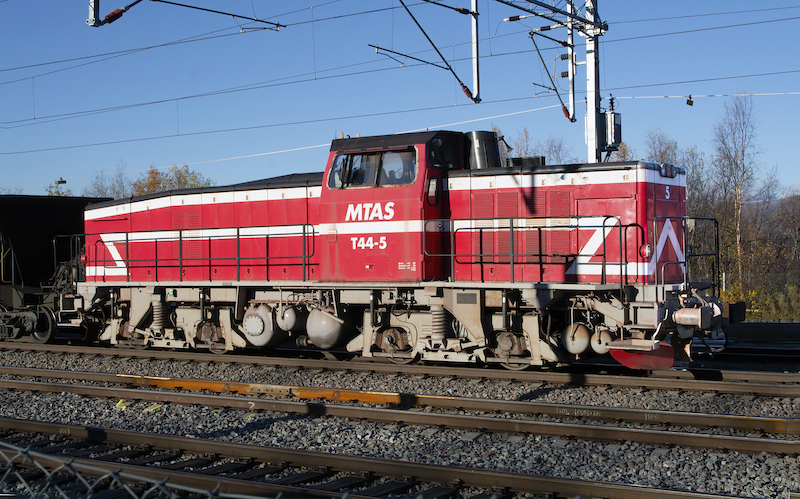 NOHAB-built MTAS T44-5 at Abisko-R is powered by an EMD diesel. 28 September 2022 |
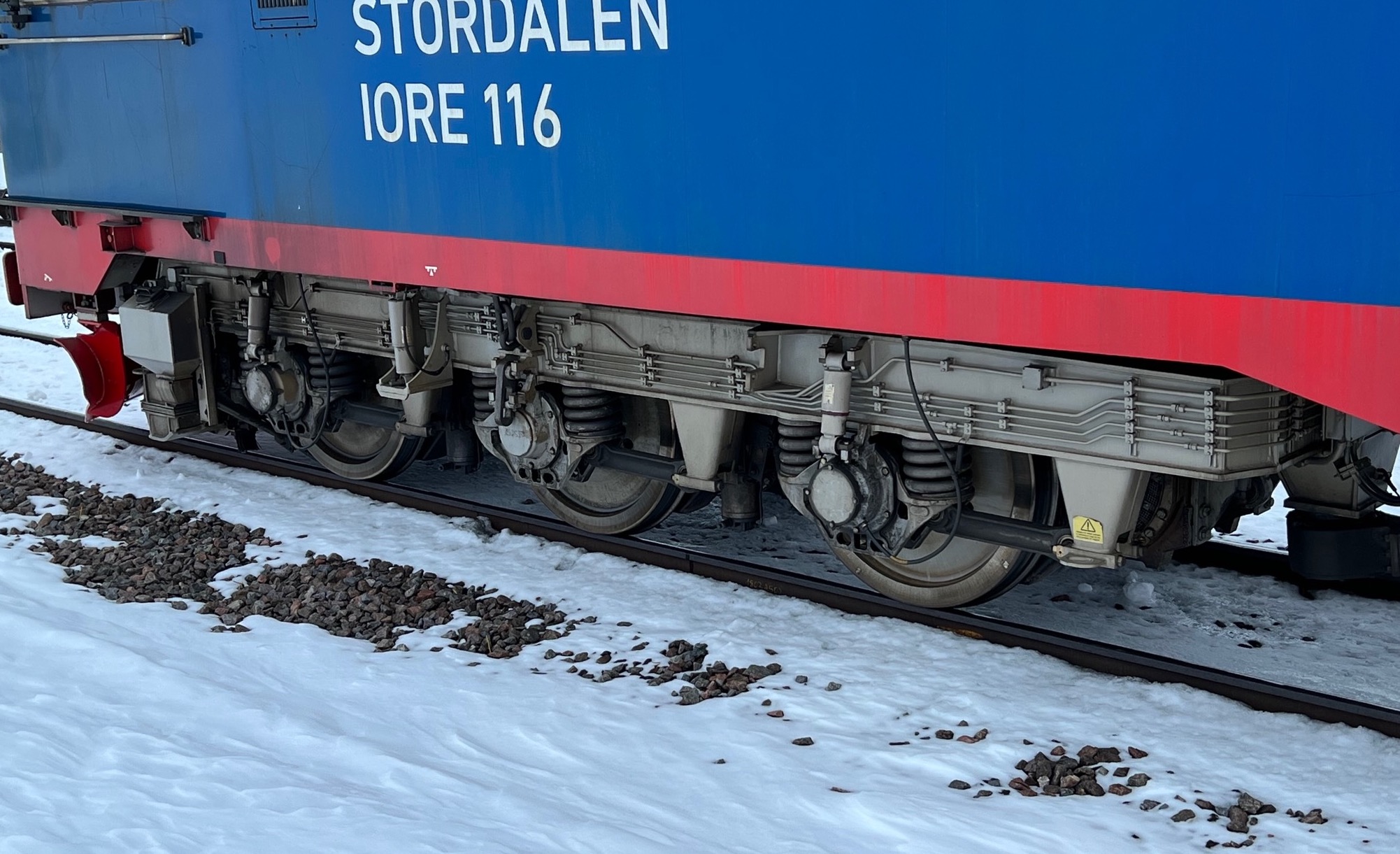 Similar to SD70ACe-T4C trucks, IORE truck is rated 130,000 lbs. tractive force. (date) |
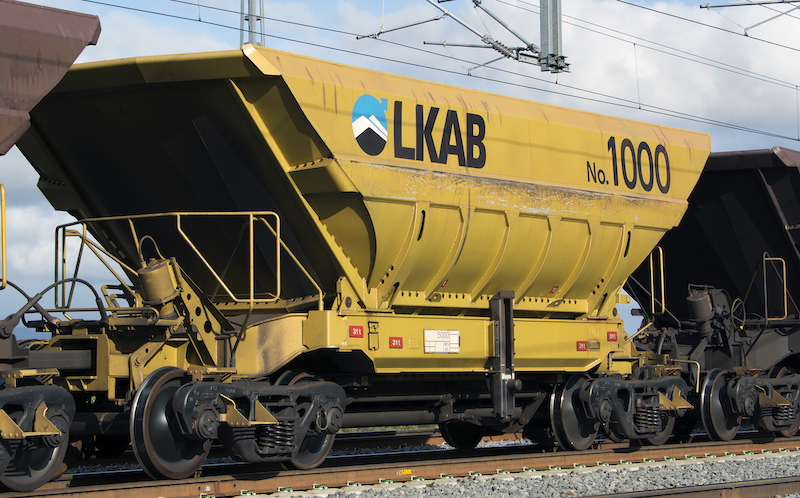 The #1000 commemorates the 1000th car produced by Kiruna Wagon, 31 August 2018 |
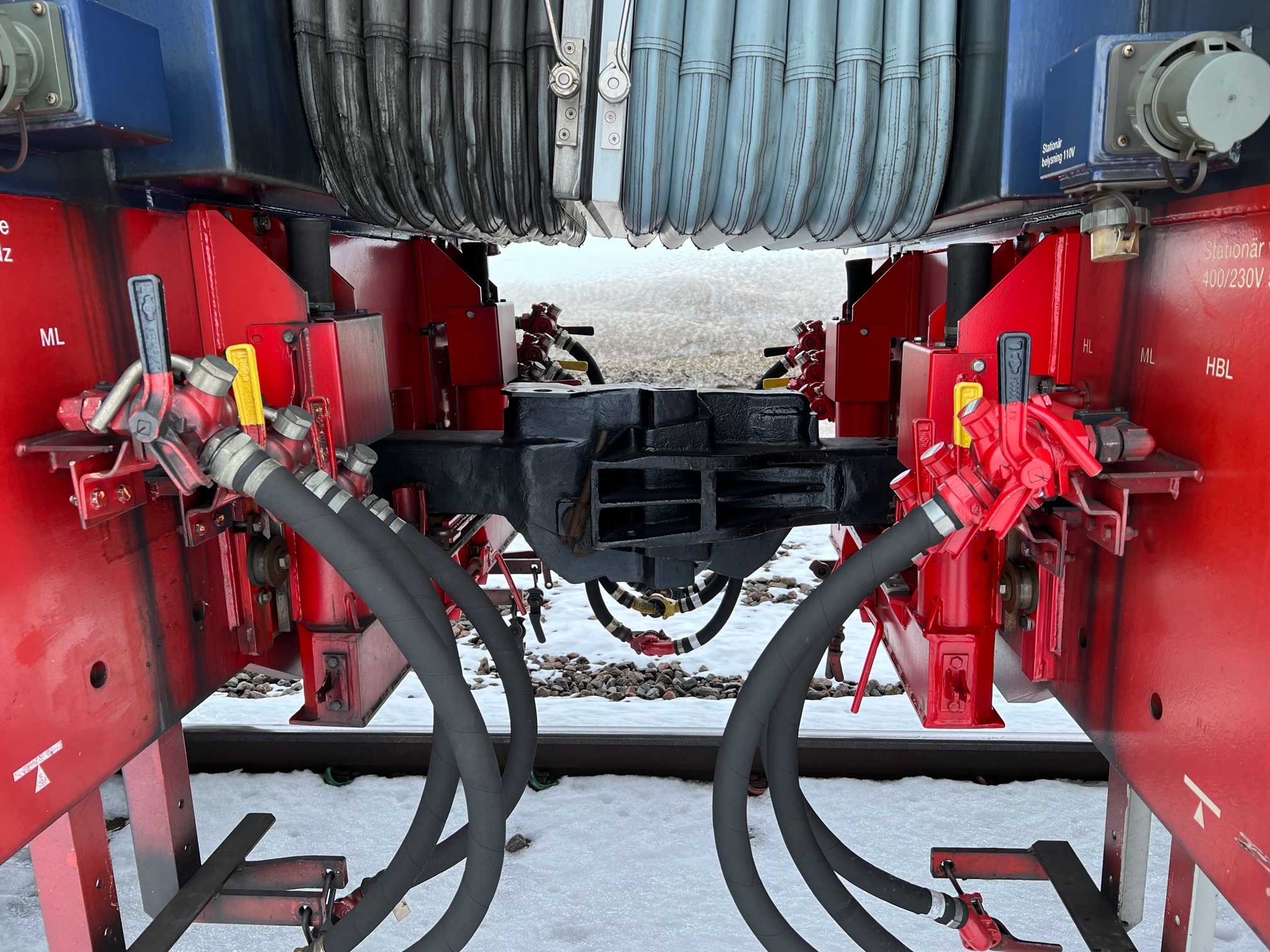 Russian-built coupler system uses air pressure to lift pins (date) |
 IORE electric-drive equipment is well maintained and kept clean. (date) |
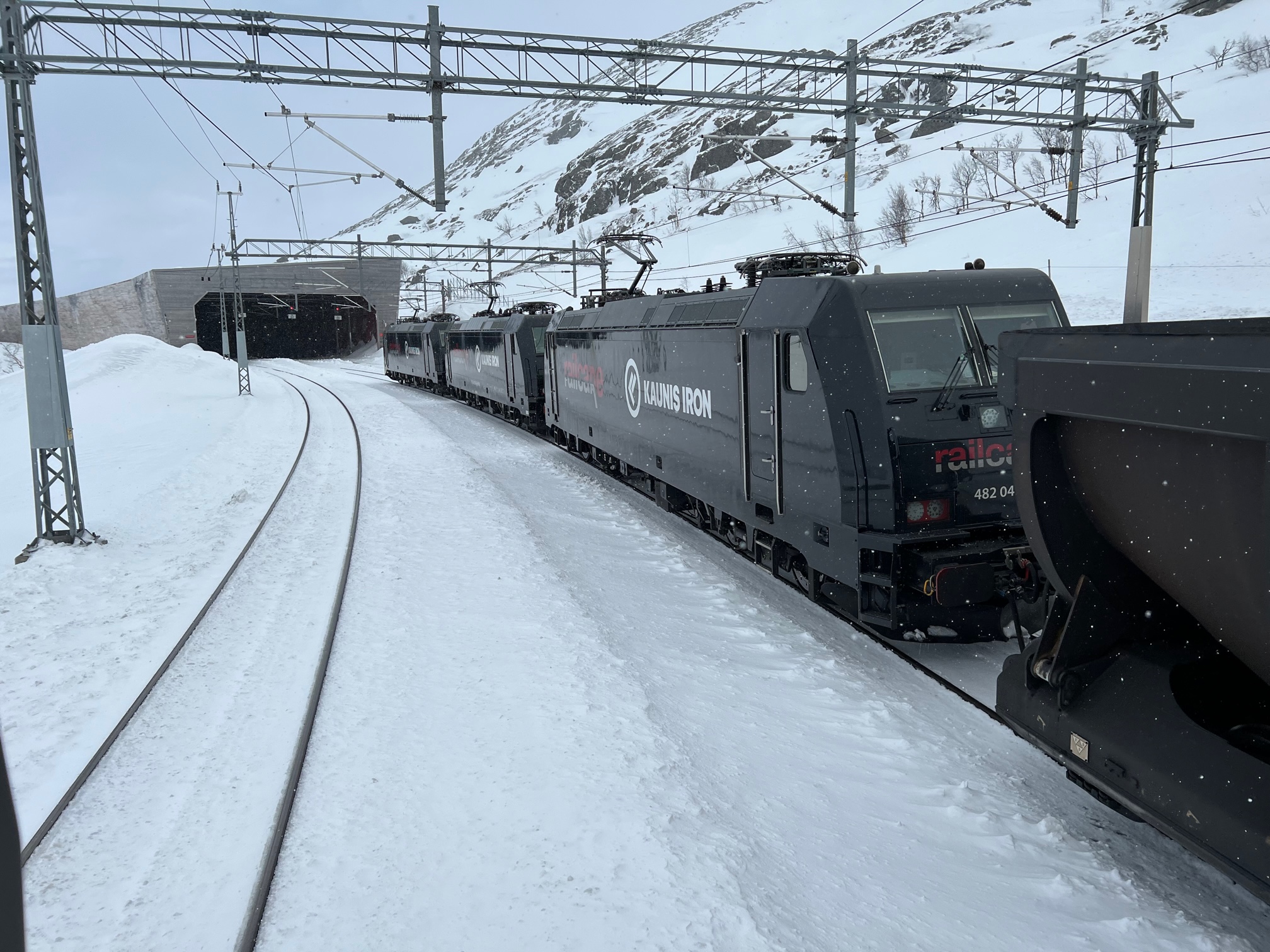 Three Kaunis Iron ore haulers dive into one of the several snowsheds. (date) |
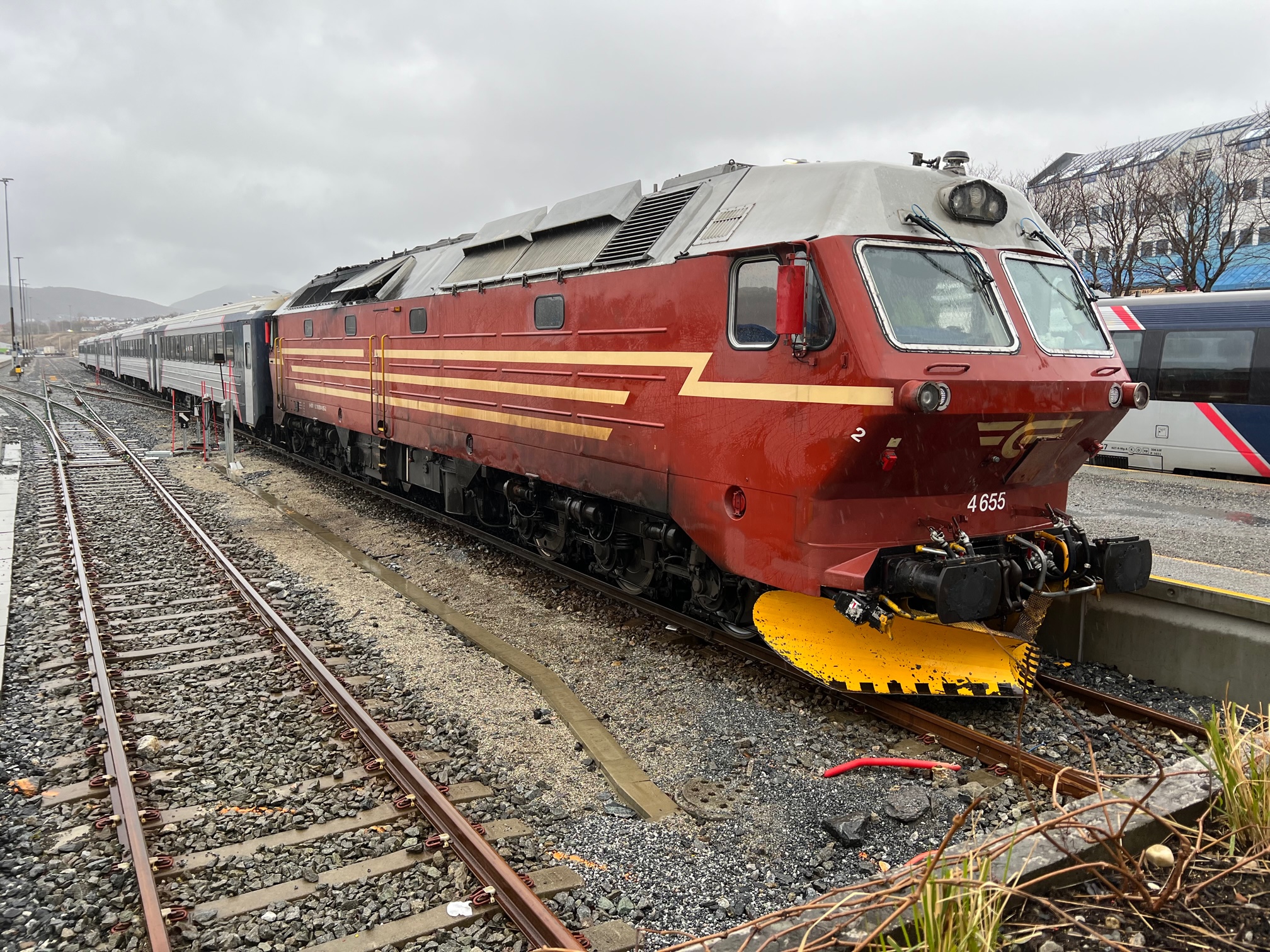 Nordland Rwy connects Trondheim with Bodø 100 miles north of Arctic Circle. (date) |
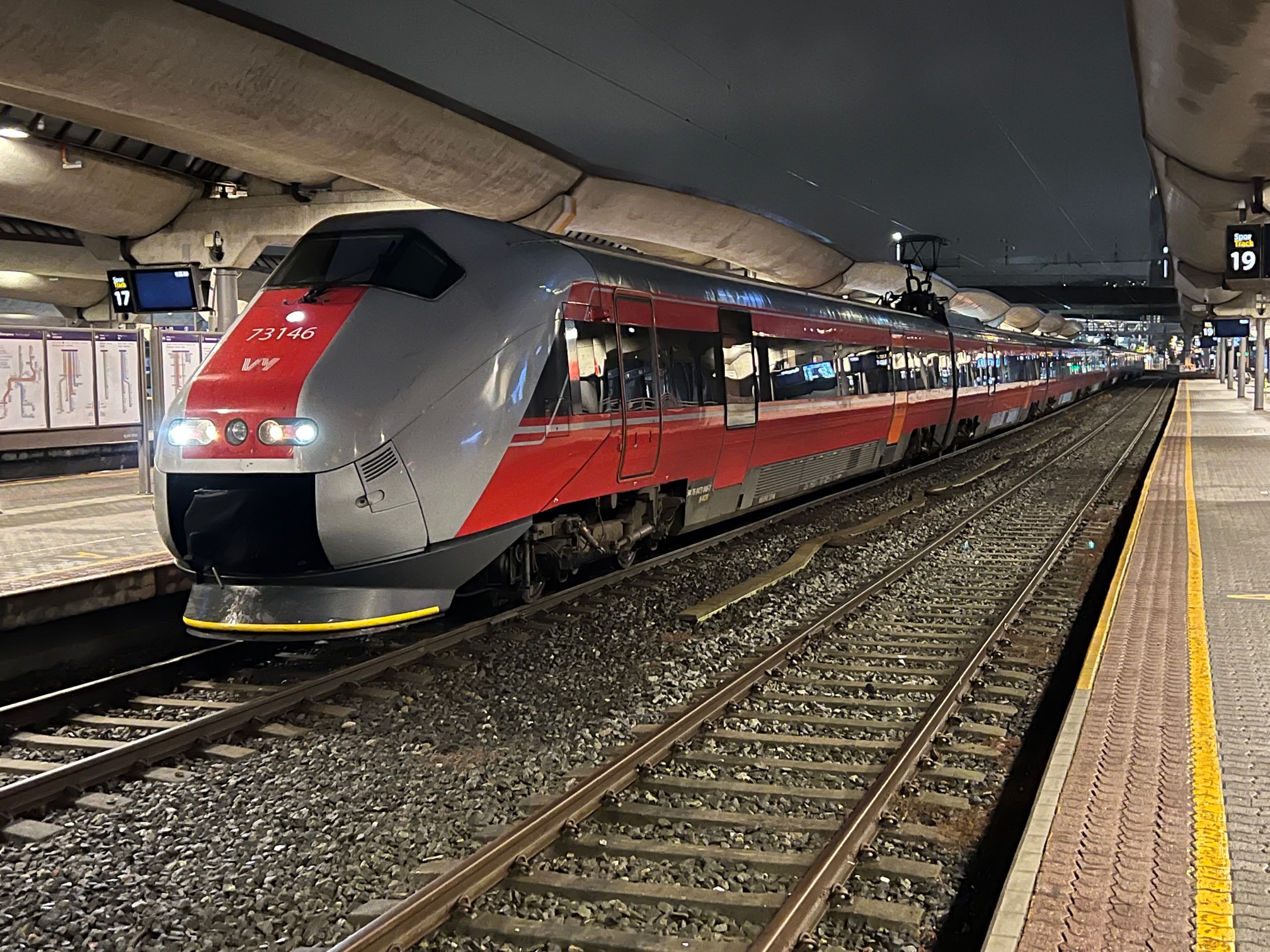 Government-owned VY provides most Norway passenger train and bus service. (date) |
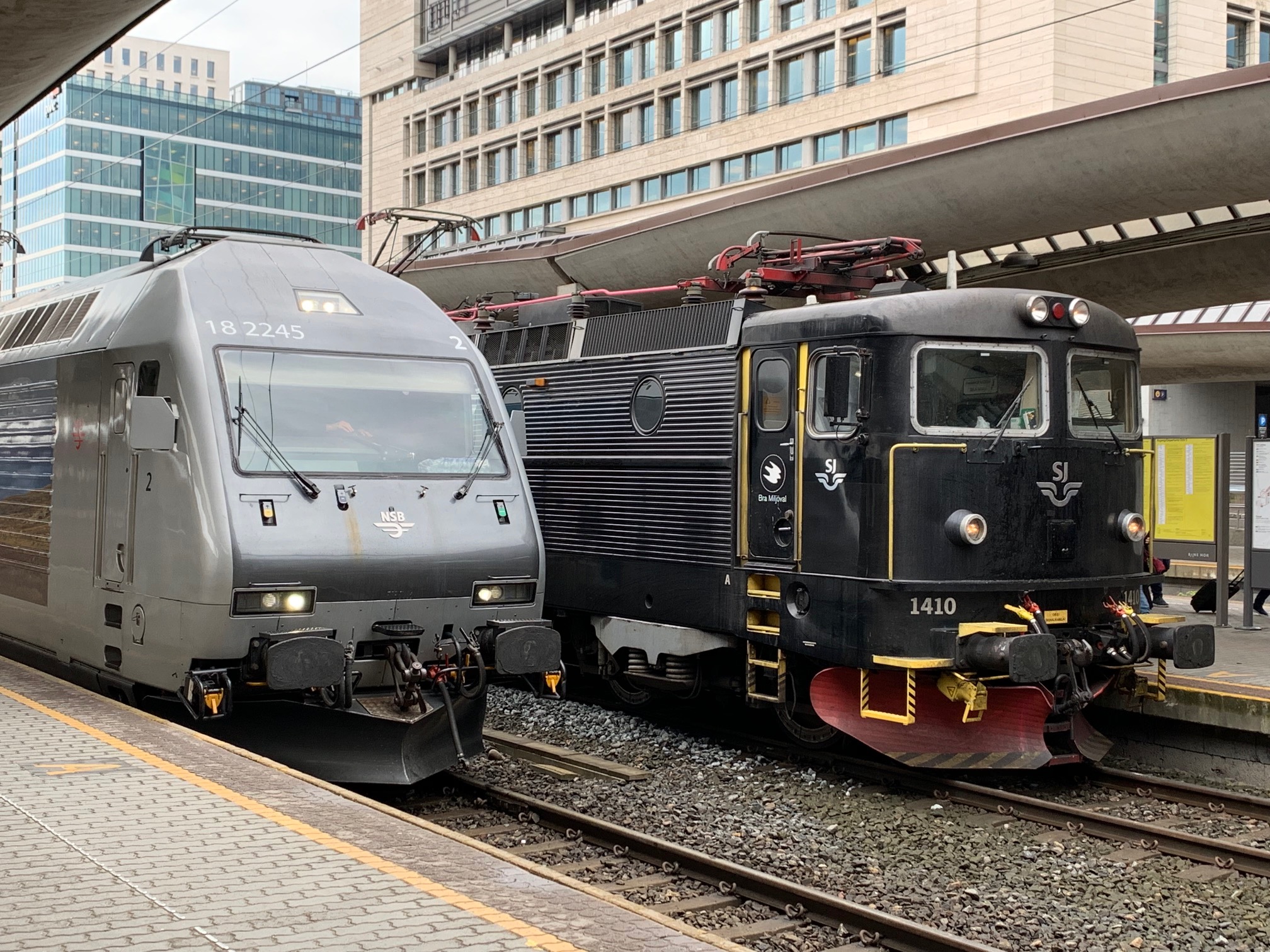 SJ and VY (formerly NSB) trains meet at the Oslo Station. (date) |
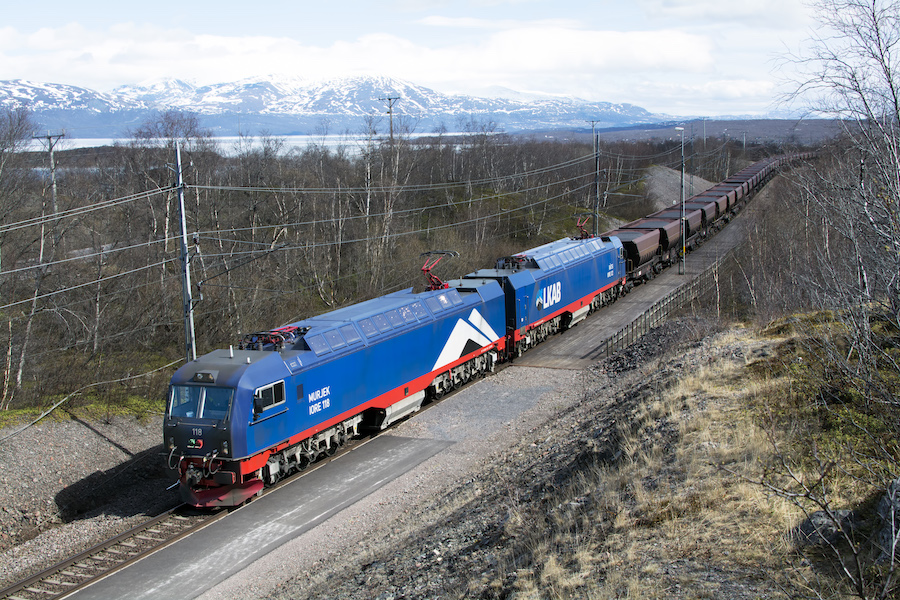 "With respect to automation,
the closest would be the unloading process. Even then, the movement is done with a person
in the cab. To unload, the train enters a long shed, approx. 1/3 of a mile in length. The
shed covers 14 silos, each 60 meters deep. Each silo is designated to handle a specific
type of pellet in terms of iron content and / or quality. The train proceeds into the shed
where the crew exits and an unloading engineer takes over control. The automated process
involves an unloading device which straddles the rails. The unloader opens the hopper doors
and then two large clasps grab the car and shake it to remove any residual pellets. The
shaking is loud enough to wake the dead, twice over.
"With respect to automation,
the closest would be the unloading process. Even then, the movement is done with a person
in the cab. To unload, the train enters a long shed, approx. 1/3 of a mile in length. The
shed covers 14 silos, each 60 meters deep. Each silo is designated to handle a specific
type of pellet in terms of iron content and / or quality. The train proceeds into the shed
where the crew exits and an unloading engineer takes over control. The automated process
involves an unloading device which straddles the rails. The unloader opens the hopper doors
and then two large clasps grab the car and shake it to remove any residual pellets. The
shaking is loud enough to wake the dead, twice over.
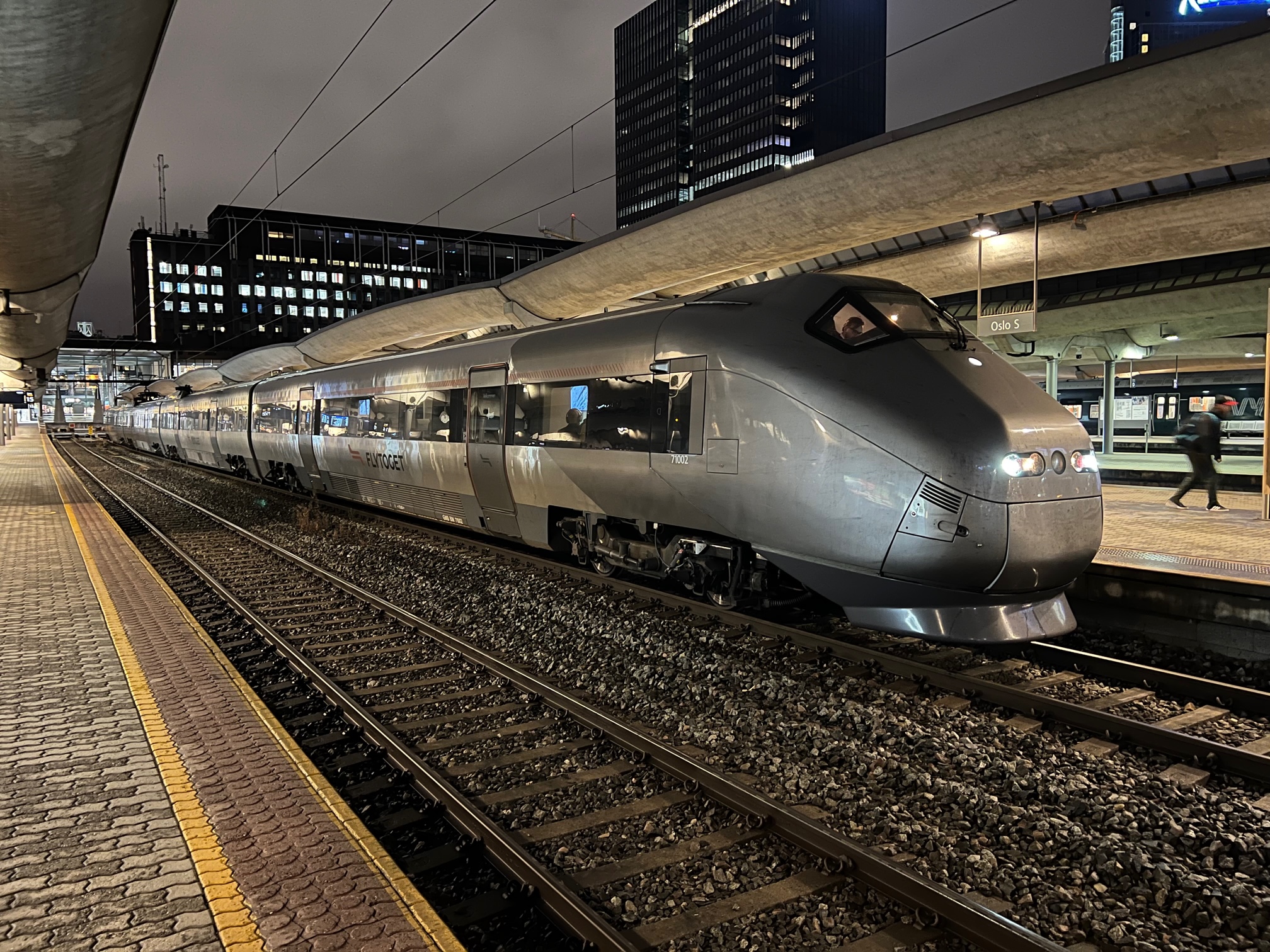 Passenger Trains:
Passenger Trains: